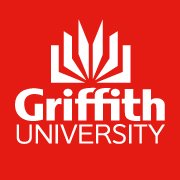Full description
The Fair Go tells the story of the 10 year campaign to change Australia’s constitution waged by FCAATSI — the Federal Council for the Advancement of Aborigines and Torres Strait Islanders. The aim was to explore the interaction of institutional processes and grass-roots participation. In 2007 The Fair Go was ‘re-hung’ for the exhibition installation 'Old Ways, New Ways: The Human Story Shining the Light on Referendum Victory' and was on view at the Queensland Museum from 27/05/07- 16/05/08. Research Significance: While The Fair Go reaffirms the understanding that acceptance of the technical changes to the nation’s Constitution were fundamentally about recognising Indigenous civil rights, there is a tension in the film reflected, for example, when the Aboriginal leader and spokesperson Charles Perkins says that the referendum was the only time ‘the fair go’ meant something in Australia. This registers the distance between the hopes associated with the marking of a new era in Indigenous history and policy and the continued ‘struggle for socio-economic advancement and equality’ (Pearson 2007: pp. 272, 282). No immediate changes in laws and policies followed the referendum and the ‘success story’ recounted in The Fair Go is designed to make an ethical appeal to maintain in the public domain what Pearson (p. 282) sees as necessary ideals capable of securing change only ‘through close attention to reality’. Pearson, N. ‘White Guilt Victimhood and the Quest for a Radical Centre’ in D.Modjeska (ed.) The Best Australian Essays 2007 Melbourne: Black Inc.Issued: 2007
Subjects
Australian History (Excl. Aboriginal and Torres Strait Islander History) |
Constitutional Law |
Film, Television and Digital Media |
Film and Television |
Historical Studies |
History and Archaeology |
Law |
Law and Legal Studies |
Studies in Creative Arts and Writing |
User Contributed Tags
Login to tag this record with meaningful keywords to make it easier to discover
Identifiers
- DOI : 10.25904/1912/3922

- Handle : 10072/395807



